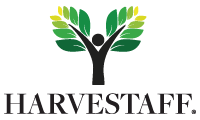Managing The New Normal: Workforce Challenges Throughout And After The Pandemic
Many workforces now work remotely or in settings other than their regular ones as a result of the COVID-19 epidemic.
To accommodate social distance and to aid in the effort to stop the epidemic, businesses are adapting their operations.
Flexible employment looks to be here to stay as long as the search for a vaccine is ongoing. What does that mean for the workers, though? What actions must managers take to help staff adapt to the new remote work standard?
The same ideas at several points
More businesses will adopt flexible working arrangements, predicts author, speaker, and expert on leadership, employee engagement, and the future of work Jacob Morgan in a new essay.
Numerous millions of people all around the world work from home as a result of the ongoing pandemic. Even once the pandemic is over, expect to see a significant increase in flexible employment opportunities. It's likely that this will continue in the next months. However, companies must adopt new digital tools and methods of operation if these projects are to succeed.
Using the appropriate technology in accordance with a company's specific goals
Focus on developing a plan that will help you grasp the "why" before the "how," as this is essential for the success of any joint effort, rather than rushing to choose that swanky new collaboration and communication platform. You don't want to be in a situation where a technology has been applied to something without you knowing why. Make sure that everyone is aware of the desired results, especially during this pandemic.
Along with implementing the appropriate solutions, the significance of teamwork, assessing the proper KPIs, setting an example, and paying attention to the voice of the organization are all emphasized.
Employees shouldn't ever view collaboration as an extra work or demand.
Collaboration ought to come naturally to them. For collaboration to be successful, it must continue throughout time and involve more than just establishing ground rules. It all comes down to having a flexible and adaptable mindset.
Always keep in mind that cooperation is necessary. The workplace changes as a result of the ongoing development of new technology and methodologies. This implies that if conditions change, your business must be flexible enough to grow.
Maintain a close eye on what's happening in your industry and business. You'll be able to think creatively and strategically as a result. Because they lacked the necessary leadership, resources, policies, and training to make flexible work successful, many firms were unprepared for this pandemic.
A thorough action plan is required.
Workplaces all throughout the world have been affected by the outbreak. Businesses claim previously unheard-of levels of stress and worry among the American workforce as a result of radical changes in several facets of work and employee life. What is the current state of business, in your opinion? The plan of action must be clearly stated by the leader and communicated to the team.
The execution of an action plan requires technology.
The battle is only partially won by having an attack strategy. The act is being done by the other individual. Technology is required to make that happen.
In this aspect, a workforce management platform is useful since it enables you to run your business profitably across borders, maintain control over it, and enhance employee interactions. Automation, personalization, and swift market shift adaption are all possible.
Especially now, managing a workforce presents a number of difficulties. It's crucial to have the appropriate solutions set up so that you can concentrate on teaching your staff and giving them the tools they require to succeed in the remote work era and beyond. If you want to start putting these suggestions into practice, get in touch with us.
